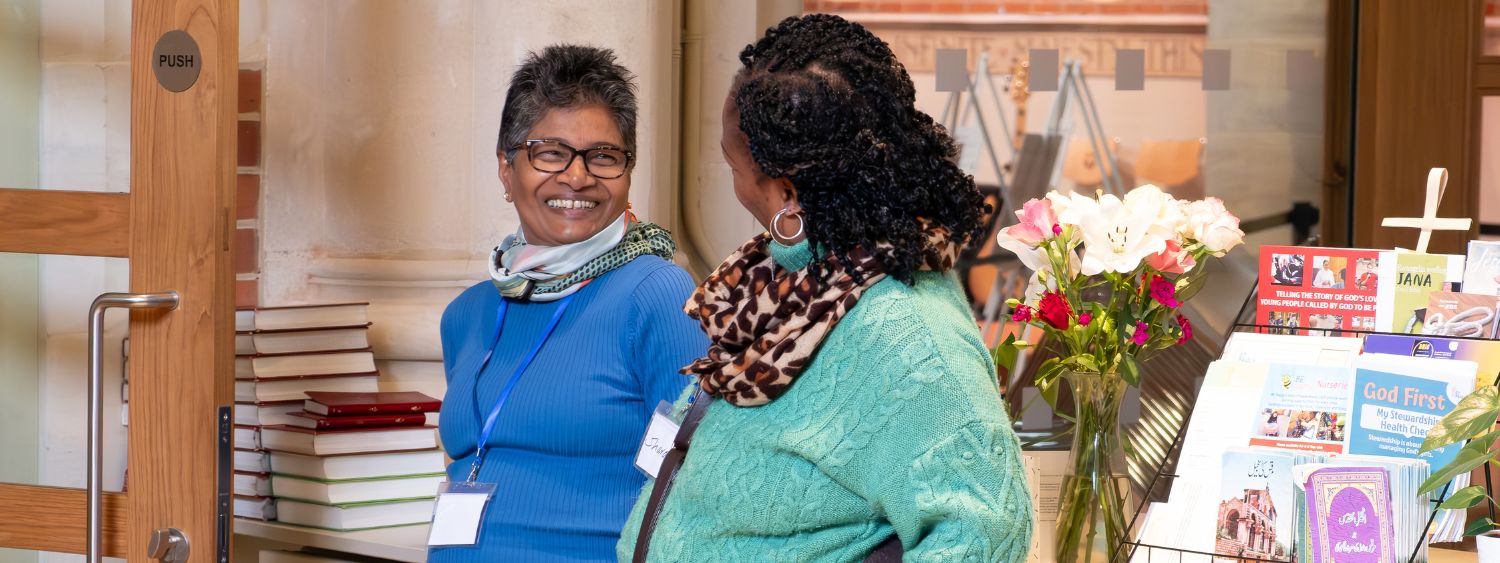Jump to: Intro | Case study | Things to consider | Next steps
Could your church run a warm space?
As energy bills continue to put strain on people's finances, there is growing concern people are struggling to heat their homes, and of the impact this has on people's health and wellbeing. As expenses increase, it is likely that leisure pursuits and social activities are the first cuts to people’s spending. This could have knock-on effects for feelings of isolation and people’s mental health.
Offering Warm Spaces will be an act of generosity in a difficult time for many. In some cases, these Warm Spaces will be in church halls or other church-owned buildings, which are often cheaper and easier to heat than church worship areas. Depending on local resources and community need, a Warm Space could be open from a couple of hours a week, or even every day.
In fact, many churches are already running events and activities, perhaps weekly or monthly, that may be considered a Warm Space - if they are warm, welcoming, inclusive, free, and safe then they could be considered a Warm Space!
 It's encouraged that churches running a Warm Space, register with Warm Welcome Spaces to access free resources, support, access to funding, and to be part of a movement of community spaces creating a network of hope and connection. You'll also appear on their interactive map, enabling others to find your Warm Space. At least 15 churches in the diocese are part of the Warm Welcome Spaces network already.
It's encouraged that churches running a Warm Space, register with Warm Welcome Spaces to access free resources, support, access to funding, and to be part of a movement of community spaces creating a network of hope and connection. You'll also appear on their interactive map, enabling others to find your Warm Space. At least 15 churches in the diocese are part of the Warm Welcome Spaces network already.
This Warm Welcome Week (20-26 January 2025), we want everyone to find a place of belonging and connection close to home. Warm Welcome Spaces come in all shapes and sizes, but what they all have in common is that they are warm, welcoming, free, and safe. Perhaps you set up a pop-up Warm Welcome Space during Warm Welcome Week, even if its just for a few hours?
We acknowledge church’s concerns about their energy bills in the current context, as well as the impact on the climate when heating with non-renewable gas and electric. If Warm Spaces are not possible in your context, there are many ways churches can respond to the cost-of-living crisis and support their communities - find more ideas and resources here.
Examples of Warm Spaces
This may be adapted depending on demand and needs. Their building would already be heated for the offices above the hall, used by a charity tackling social isolation and loneliness. Their hall itself is occasionally hired out but has enough space in the schedule to allow for these new winter hub activities.
Preparations include recruiting volunteers to run the sessions and cater, food hygiene training and inspection by the local council, and consideration of activity provision. They will also get familiar with local services to direct people to if they need more support.
The intention is that the space is ‘by us and for us’ – a space for everyone in the community, not just certain demographics, with the hope that those who come may also help with the running of the provision. This initiative will be funded through a mix of the church’s funds, a Development Fund application and ward councillor community funding. They will also operate a pay-as-you-can donation system for those attending for food or activities.
Listen to interviews from St Mary's, Chipping Norton and St Luke's, Maidenhead below:
Considerations for churches
Thinking about whether you can become a warm space? Consider…
- Will people come? Who would you expect to attend the warm space?
- Are other organisations providing warm spaces already, or is the local authority co-ordinating a response? If so, will you be duplicating or is there a gap in provision your church can meet? Can you join in with what’s already happening?
- Is the church building going to be heated anyway? Or can you extend the opening hours before/after existing activities (eg morning prayer, toddler group, lunch club etc)? These will both help mitigate the costs of running a warm space. The Church of England has released a list of ideas for churches looking to reduce their energy bills this winter.
- Your local council may also be offering some grants for local charities providing support this winter - investigate whether this is available to you.
- Is the church on a fixed-rate energy contract, secured before the energy price rises? If so, there may be more financial capacity as bills may be lower.
- Does the church have renewable energy provision? This would mean there is a lower/zero carbon footprint if more energy is used for a warm space.
Once you've decided your church can become a warm space, there are some other things to consider...
- Partnership - can you link up with other churches and public buildings in the vicinity so there’s a place to go to every day of the week?
- Will you run food provision too (breakfast/lunch/supper club, hot drinks, snacks)? To do so, do you need food hygiene training and an inspection?
- What activities will you run or facilitate (eg children’s activities, organised activities like bingo, book groups, Zumba, co-working spaces, homework clubs etc)? For a broader range of people to come, staying warm should be a wonderful by-product of building community, with people wanting to attend meaningful activities, rather than the focus being on the warm space.
- How will people in your community know about your warm space? This might be through local schools, social workers, local businesses, fliers, banners, social media etc.
- Consider how you name and advertise your warm space – calling it a warm space/bank/hub or making the primary purpose about staying warm may prevent people from coming. The labels ‘hungry’, ‘cold’, or ‘lonely’ also hold a lot of stigma. How will you communicate that it’s for everyone - not just for those struggling with their energy bills, or even just churchgoers? It is likely better to centre your warm space around an activity or purpose, with being a warm space secondary.
- Remember, people might come for the warmth, but will stay for the welcome and community - how can you foster community growth in your warm space?
- If you’re not already on a renewable tariff, is there scope to change to one?
- How will you train or brief your warm spaces team/volunteers?
- How will you involve attendees in the running of the warm space (eg volunteering, hearing what their needs are for the space, encouraging and supporting others to lead/run their ideas/activities etc)?
Next steps
Warm spaces meet an immediate need, but they won’t be sustainable or comprehensive answers to much of what people face. It’s therefore vital warm spaces volunteers and staff are aware of other services (see the cost-of-living crisis webpages) to signpost those who need holistic and sustainable support. People might not explicitly ask for help, so volunteers and staff will need to look out for signs people are struggling or occasionally ask gentle questions.
Perhaps your Warm Space will lead to the birth of other church-led support or your Warm Space will explore the possibility of advocating and campaigning for local or national changes to ensure people are better supported when they're struggling.
Other Resources
- Asthma + Lung UK have created guidance to help reduce the spread of inflections (eg flu, norovirus, and COVID) in Warm Spaces. People attending are likely to include some of the most vulnerable in society, perhaps with long-term health conditions which can be worsened by acute respiratory and other infections.
